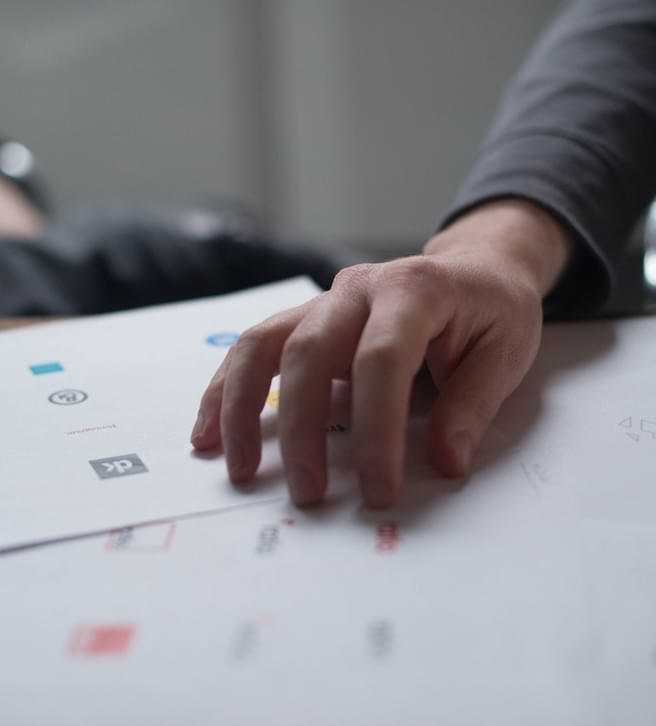Having a logo for your business, its website, and your social media is important. A logo not only looks nice, but it gives your business a recognizable and consistent graphic that reminds customers who you are.
Whether you’re paying a freelancer, designing the logo yourself or even paying high dollar for a graphic design agency, keep in mind these things that will help you get a logo that is effective for your business.
DO:
Keep it simple
It’s okay for your logo to have details, but don’t have details become so fine and small that your logo is illegible or pixelated at smaller sizes. Remember that while you might want to plaster your logo on the broad side of a work truck or billboard, you’ll also need it to work when it’s put on a business card or used as the icon for your website.
Use a logo that makes sense for your target audience and products/services
It’s important that the fonts, colors and elements used in your logo fit what your product is and who it’s targeted for. For example, the logo for a funeral home shouldn’t have a youthful, playful font with a cartoon next to it. And likewise, the logo for a trampoline park shouldn’t have elegant cursive with a silhouette of a big oak tree.
If you’re not sure whether the logo you’ve drafted up works for your business, ask your family and friends! Other people can help you decide whether your design reminds them of the product or service you offer.
Get an .svg file
Some people make the mistake of saving only the .jpg or .png version of their logo, or worse yet, merely taking a screenshot of it from their email inbox and uploading that to Facebook (don’t do that!).
Many graphic designers – and even some DIY programs – offer logos in .svg format. SVG, or “scalable vector graphic,” is what it sounds like: It’s a version of your logo that can be enlarged without losing any of its resolution quality.
If you work with someone who asks you to send them a “vector” of your logo, this is what they’re talking about, and it will likely come up if you ever need your logo to be really big, like on a printed banner or vehicle wrap.
Use consistent colors and typefaces
A common mistake people make when creating branding for their business is having things be inconsistent. Maybe you got a vehicle wrap from one place, and your t-shirts from a different place, and then your logo after that, and never made sure any of them match!
It’s important to establish guidelines for what you want marketing materials to look like, and stick with it. If your logo is red and black, then your other materials should have those same colors, and ideally, the same or similar fonts. If you want to change your logo or colors later, you should update other things like your business cards and social media design.
DON’T:
Don’t use copyrighted material
This is a common but potentially expensive mistake to make, especially when you’re building a logo yourself. While it’s tempting to go on Google Images and find an icon or photo to use in your logo, don’t do it, as it’s very easy to infringe on someone’s copyright by doing this.
Always make sure that you’re sourcing illustrations and icons from websites that offer such assets for commercial use without attribution, like Pixabay. In other words, you’re allowed to use it for your business and you don’t have to cite who designed the graphic asset.
There are websites out there that offer icons and images for free for commercial use without attribution.
Don’t build a logo that looks like a competitor
Do a little bit of research to make sure that you don’t have a competitor with a similar logo to the one you’re working on. This is not only important for legal reasons, but your logo should also serve to set your business apart – not confuse it with someone else. It’s in your best interest to have a logo that’s original and unique!
Don’t post a low-resolution version
If you’re putting your logo on social media or elsewhere online, don’t use a tiny version that you cropped from a screenshot. Upload the full-sized file that you got from the designer or website you got it from. This will ensure the logo is of a proper resolution and doesn’t look blurry or fuzzy.
Don’t have different logos that don’t match or coordinate with one another
It’s possible that you’ve gotten a logo in the past and want to get a new one. That’s great! But it’s important to update your logo everywhere. Your logo is supposed to identify who you are, so if some of your marketing assets still use an old logo that you’ve since replaced, there’s potential to confuse your customers.
No matter what you do, don’t underestimate the power and importance of having a logo that you use over and over again. And remember, doneWebs offers logo design for an additional fee to its customers.
To get started on a website, visit donewebs.com.


